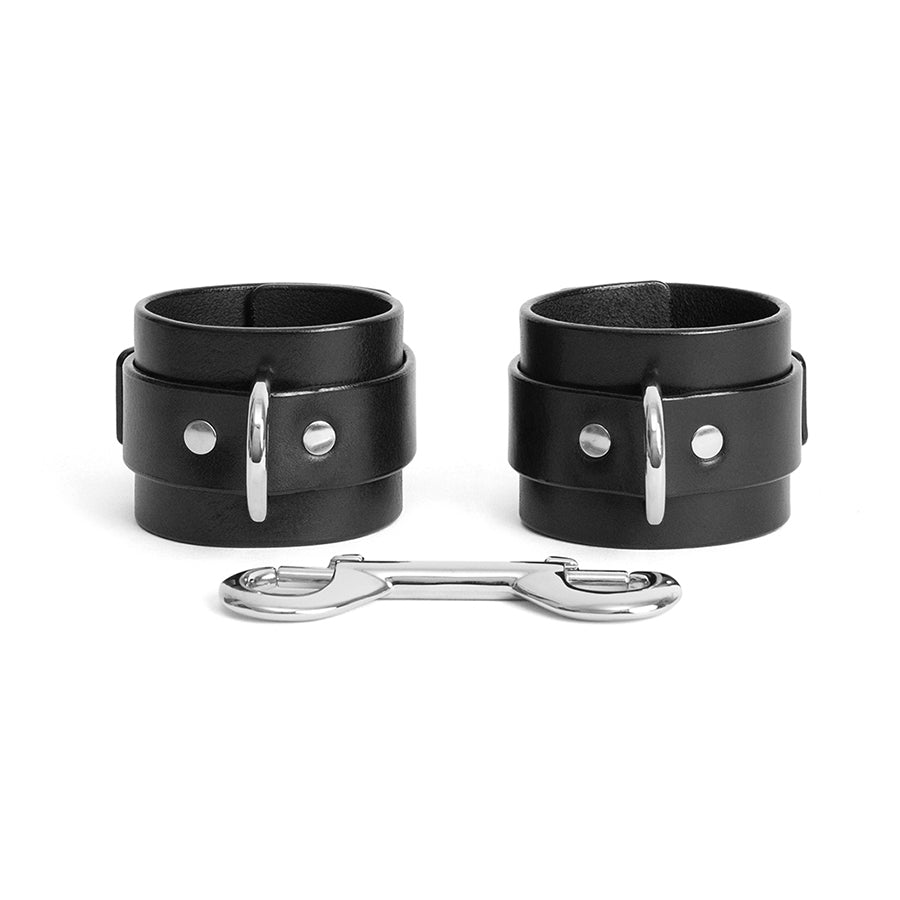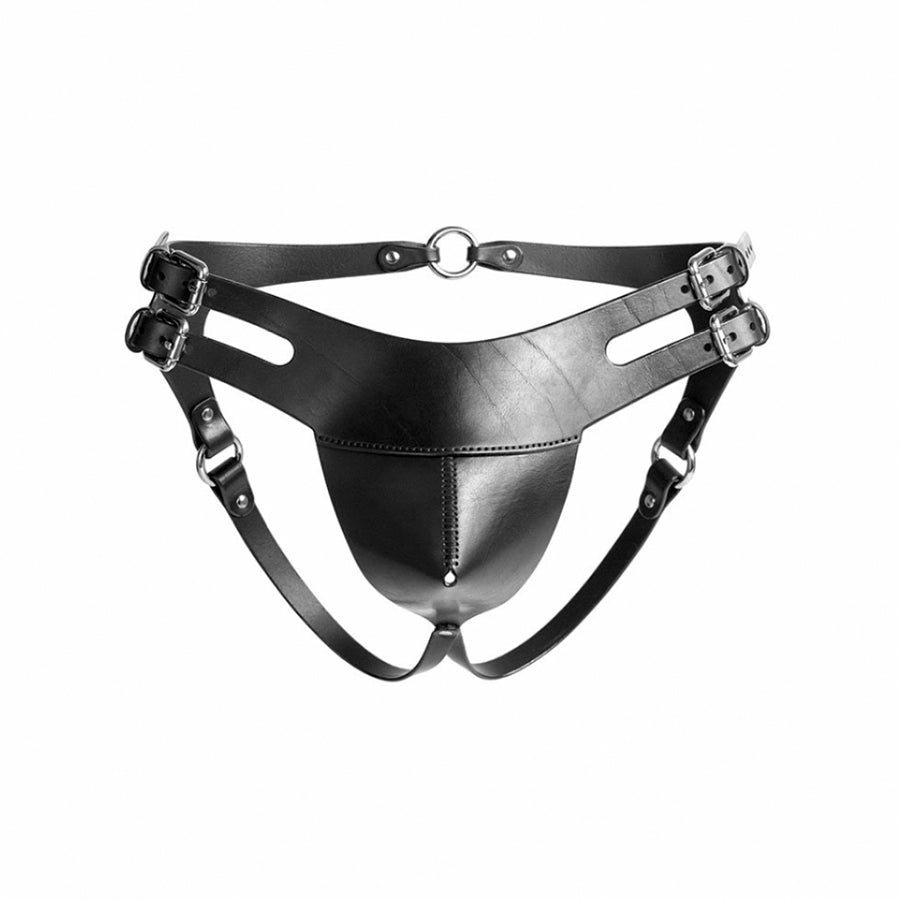
June 02, 2023
Understanding Sub Drop: Navigating the Emotional Aftermath of BDSM
Engaging in BDSM (Bondage, Discipline, Dominance, Submission, Sadism, Masochism) activities can be an exhilarating and fulfilling experience for many individuals. However, it's important to acknowledge that there can be emotional and physiological consequences that follow intense scenes. One such consequence is known as "sub drop," which refers to the emotional and physical drop experienced by submissives after an intense BDSM session. In this blog post, we will explore why sub drop occurs, the hormones involved in this process, why it might be more common in committed relationships, and provide some suggestions on how to navigate and overcome sub drop.
Understanding Sub Drop
Sub drop is a phenomenon that occurs when the "submissive" partner experiences a sudden emotional low or crash after engaging in a BDSM scene. This emotional drop can manifest in various ways, including feelings of sadness, anxiety, fatigue, vulnerability, and even physical symptoms like headaches or body aches. It is essential to recognize that sub drop is not a reflection of the dominant partner's ability or performance but rather a natural response of the submissive's body and mind.
Hormones and Neurotransmitters Involved
Several hormones and neurotransmitters play a role in the experience of sub drop. During BDSM scenes, the body releases endorphins, which act as natural painkillers and provide a sense of euphoria. However, once the scene ends, there is a significant drop in endorphin levels, which can contribute to the emotional crash. Additionally, the body might also experience a decrease in serotonin, a neurotransmitter responsible for regulating mood, which can further intensify the emotional lows.

Committed Relationships and Sub Drop
Sub drop tends to be more prevalent in committed relationships for a few reasons. Firstly, the level of trust and emotional connection between partners in committed relationships is typically stronger. This deeper bond can create a more intense emotional response during BDSM scenes, making the drop more pronounced. Secondly, in committed relationships, partners may engage in longer or more intense scenes, leading to a more significant hormonal shift and subsequent drop. Lastly, the familiarity and comfort between committed partners can create an environment where submissives feel safe to fully let go, allowing for a more profound emotional release.
Overcoming Sub Drop
While sub drop can be challenging, there are several strategies that can help submissives navigate and overcome this emotional state:
- Communication: Open and honest communication with your dominant partner is crucial. Share your feelings, fears, and concerns, allowing them to understand your experience better. This way, they can offer support and reassurance.
- Aftercare: Aftercare is an essential part of any BDSM dynamic. It involves providing comfort, physical care, and emotional support to the submissive partner after a scene. Engaging in activities such as cuddling, gentle touch, or verbal reassurance can help mitigate the effects of sub drop.
- Self-Care: Prioritize self-care after a scene. Engage in activities that promote relaxation and self-soothing, such as taking a warm bath, practicing mindfulness, engaging in hobbies, or enjoying a favorite meal. It's important to focus on nurturing and caring for yourself during this vulnerable period.
- Establish Boundaries: Work with your dominant partner to establish clear boundaries and limits during scenes. Having a safe word or signal can provide a sense of control and security, helping to minimize the potential impact of sub drop.
- Support Network: Build a support network of like-minded individuals who understand the dynamics of BDSM. Connect with local or online communities, attend workshops, or seek the guidance of a therapist experienced in alternative lifestyles. Sharing experiences with others can offer validation, guidance, and a sense of belonging.
Conclusion
Sub drop is a common experience within BDSM dynamics, particularly in committed relationships. Understanding the hormonal and emotional factors that contribute to sub drop is crucial in navigating and overcoming this vulnerable state. Luxurious lingerie such as bodysuits, dresses, or stockings can provide tactile comfort and emotional support, helping to ease the transition from intense scenes to everyday life. By fostering open communication, practicing aftercare, prioritizing self-care, establishing boundaries, and seeking support, individuals can minimize the impact of sub drop and continue to explore BDSM in a safe and fulfilling manner. Remember, self-compassion and patience are essential as you navigate the complexities of your own unique BDSM journey.
FAQ
Q: What is sub drop?
A: Sub drop refers to the emotional and physical low experienced by submissives after engaging in an intense BDSM scene. It can manifest as feelings of sadness, anxiety, fatigue, and vulnerability.
Q: Why does sub drop happen?
A: Sub drop occurs due to the hormonal and neurotransmitter shifts that take place during BDSM scenes. The sudden decrease in endorphins and serotonin levels, which were elevated during the scene, can lead to the emotional crash.
Q: Are all submissives prone to sub drop?
A: While sub drop can happen to any submissive, it is not a guaranteed experience for everyone. Factors such as the intensity of the scene, personal vulnerability, and the individual's unique physiological and psychological makeup can influence the likelihood of sub drop.
Q: Does sub drop indicate a problem in the BDSM relationship?
A: No, sub drop is a natural response and does not indicate a problem within the BDSM relationship. It is important to differentiate between the temporary emotional state of sub drop and ongoing issues within the dynamic.
Q: How long does sub drop typically last?
A: The duration of sub drop varies from person to person. It can last for a few hours, a couple of days, or even longer. Each individual's recovery process is unique, and it is essential to allow oneself enough time to heal and regain emotional equilibrium.
Q: Can sub drop be prevented?
A: While sub drop cannot be entirely prevented, certain strategies can help minimize its impact. Effective communication, proper aftercare, setting boundaries, and engaging in self-care activities can all contribute to mitigating the effects of sub drop.
Q: Is sub drop more common in committed relationships?
A: Yes, sub drop tends to occur more frequently in committed BDSM relationships. The deep emotional connection, longer and more intense scenes, and a greater sense of trust and vulnerability contribute to a more pronounced sub drop experience.
Q: How can I support my partner experiencing sub drop?
A: Supporting a partner experiencing sub drop involves active communication, practicing aftercare, providing physical comfort, offering reassurance, and being understanding and patient. It is crucial to create a safe and nurturing environment for your partner during this vulnerable time.
Q: When should I seek professional help for sub drop?
A: In most cases, sub drop is a temporary emotional state that can be managed with self-care and support. However, if the symptoms persist or significantly interfere with daily functioning, it may be beneficial to seek the guidance of a therapist experienced in BDSM dynamics.
Q: Can sub drop be positive or transformative?
A: While sub drop is commonly associated with negative emotions, it can also have positive aspects. The emotional release and introspection that come with sub drop can contribute to personal growth, increased self-awareness, and a deeper understanding of one's own needs and desires within BDSM dynamics.






